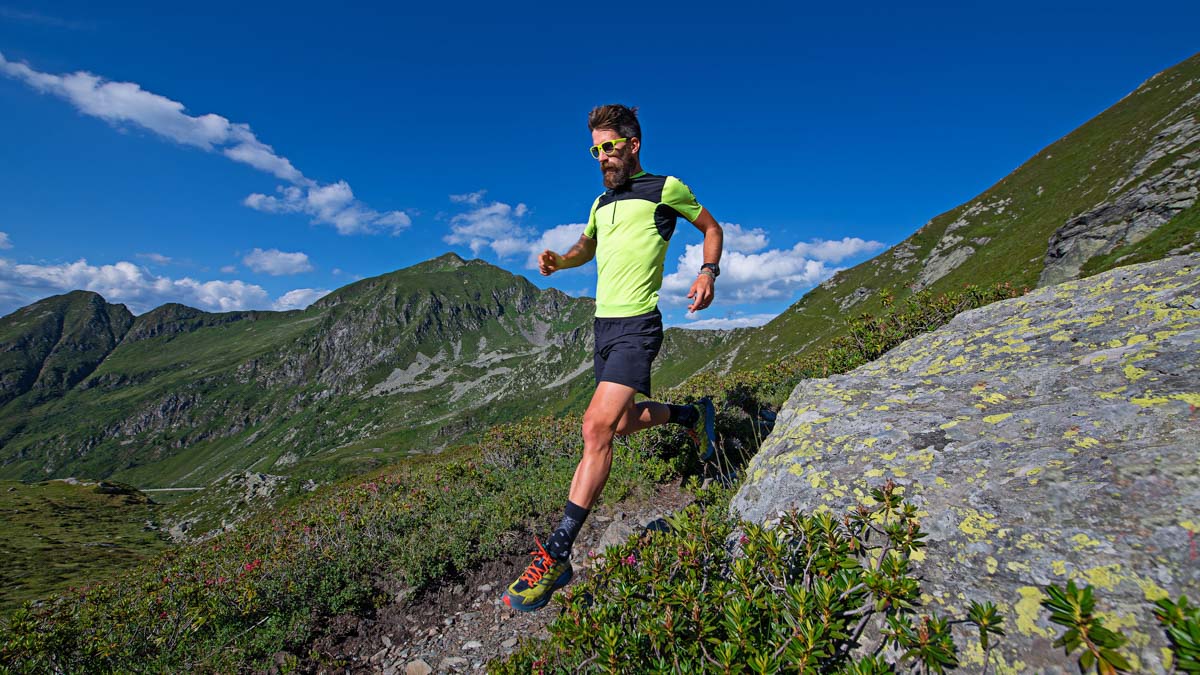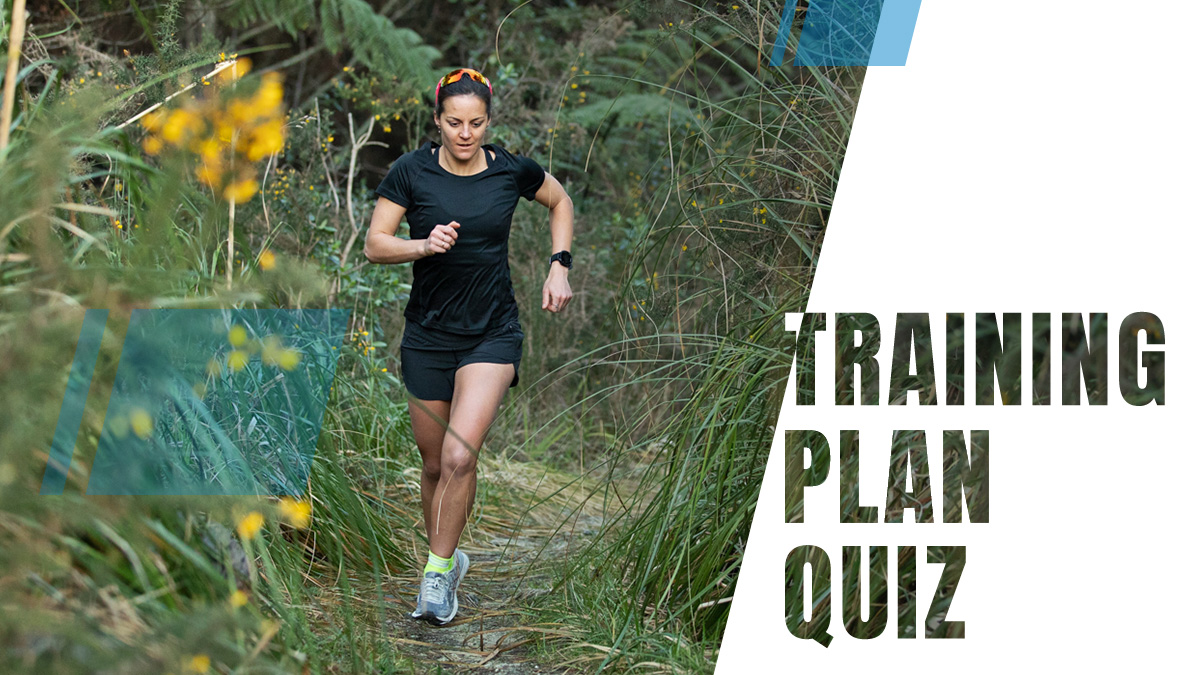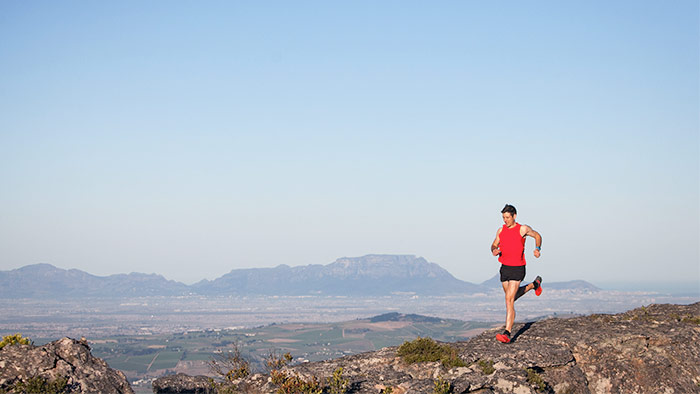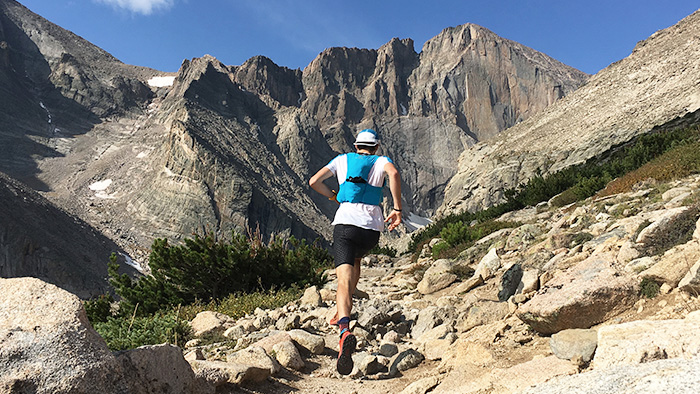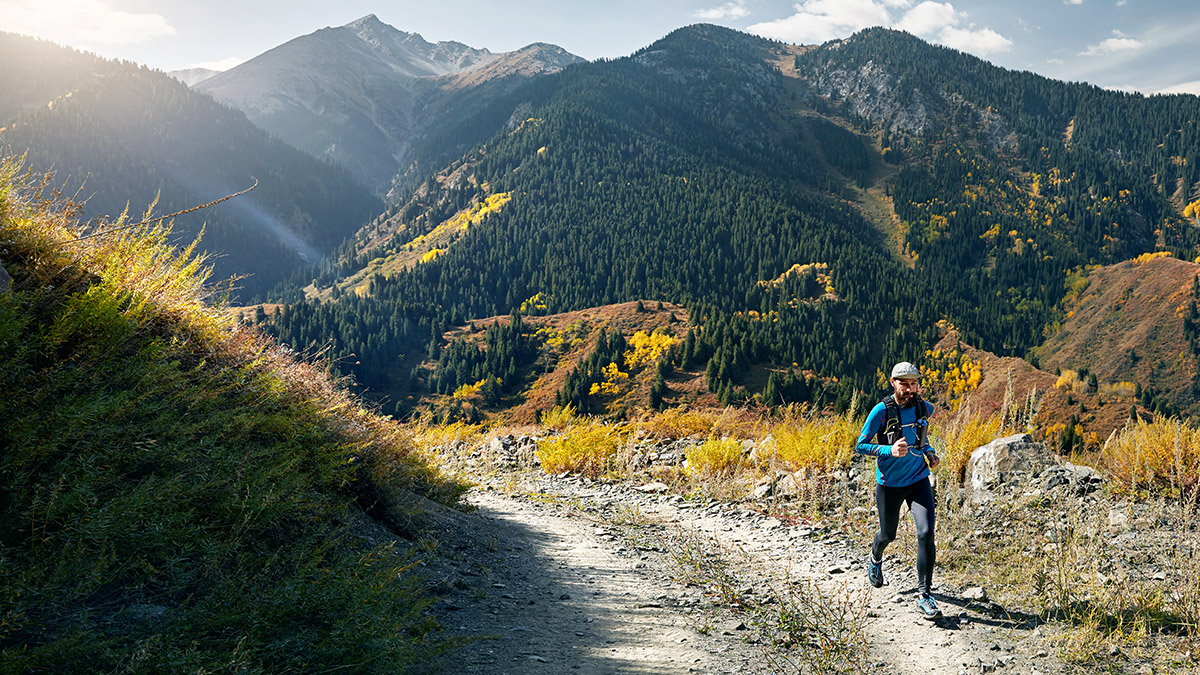Do you find yourself hitting the brakes whenever the trail turns downhill? Have to catch up to your group once things flatten out? If you find yourself avoiding certain trails because they’re too hard or make you anxious about falling, the truth is that running downhill is a skill you can practice and hone in just a few minutes every day. Here’s a guide to mastering technical descents — video included.
Control Your Fear of Falling With “Sessioning”
To improve your descent, you have to recognize that going down a steep technical hill is scary and fear-inducing. The fear of falling, tripping, or losing your footing causes runners to instantly stiffen up and take smaller steps to avoid slipping and tripping — this is 100% normal as you start out.
To get over this fear, we can implement the psychological principle of ‘priming’ to introduce a stimulus for longer and longer periods of time. When it comes to running faster down technical terrain, for example, you need to increase your reps just like you would lifting weights in the gym. I call this tactic “sessioning.”
To practice sessioning, find a short section that always causes you to slow down and simply repeat it until you can do it quickly. Think of this drill as if you were learning dance steps — it’s the repetition that builds confidence. This is something you can do on an easy run or even incorporate it as part of a hill workout.
Sessioning is not new in the world of downhill mountain biking, and for good reason. Practicing a section of trail multiple times is a guaranteed way to rapidly improve your skills. To do so, go through the section five or six times to learn when to stay left, where the gravel lives, and where to change your footing. At first, go through your desired line at a slow speed and then increase your pace each time through until you feel confident to make it through without incident.
If you don’t practice, you will remain stagnant and slow. I encourage every one of you reading this to find the piece of trail that frustrates you and make it a piece of trail that you’ve mastered!
Sighting and Foot Placement
Learning how to navigate the trail is essential in preventing slips, trips, and falls. The first mistake you’re likely making is watching what’s happening right underfoot. The habit of looking down breaks good running form and prevents you from seeing a patch of slippery rocks, a drop-off, or a berm in front of you.
Instead, practice looking 10 to 30 feet in front of you as you run. With practice and focus, I promise your brain will take care of the rest. You have to build trust through repetition and “look through the obstacles”, as your mind has already done the complex calculations of how high to pick up your feet and how hard to push off.
Assessing the Path
As you look down the trail, assess the beaten path and avoid the small, ball-bearing-like rocks that live inside the corners. If you’re working in wet and rooty conditions, do your best to get midfoot placement on roots or try to step between the roots to avoid slipping on wet bark. Picking good foot placement on large rocks in the middle of the trail is usually safe, but if you’ve noticed lots of rollout or big rocks in the middle of the trail, you may be surfing a cantaloupe-sized rock for a few feet if you make the wrong choice. The safest foot placement is the one you’re confident in and the one that connects your foot with as much ground as possible.
Picking and Placing
All surfaces and all conditions rely on great foot placement. When descending technical trails, the idea of “picking and placing” is a term I invented to pick your footing path ahead of time and try to place your feet accordingly. I always imagine drawing a line down the trail well ahead of where I want to go and adjust on the fly if needed. Sighting and holding your “line” is commonly discussed in swimming and cycling, but is also very important in running, though rarely talked about.
You’re looking for the cleanest line possible down the hill. That may mean taking a drop or changing your cadence with a stutter step to get over an object. No matter what, your line of sight should be ahead of you and not directly at your feet.
Leg Strength, Speed, and Braking
While different than pavement pounding, trail running still generates a lot of impact on the body. Think about jumping off a box onto the ground; when you land, your muscles eccentrically contract to absorb the load/force. The more momentum, the more force your body has to absorb. The same rule applies to trail running — the faster you go, the stronger you need to be to control yourself downhill.
Fast feet is one of the most important parts of technical descending and demands that you have a strong core, strong quads, strong glutes, and a healthy dose of balance. Eccentric contractions can be very demanding on your body, so you’ll want to make this a part of your strength training regimen. Adding in balance work, plyometrics, and static holds can also be game-changers if you’re focused on building leg strength.
While keeping up your speed is important, knowing how to adjust your speed by dropping your hips is crucial so you don’t over-run a segment and get yourself in a heap of trouble. You must know how to efficiently brake by lowering your hips instead of trying to scuff your feet. Braking with your feet alone puts you one poor foot placement away from a bad fall.
Picking the Right Shoe
If I could only have one piece of gear on a trail run, it’d be a good pair of trail shoes. Think back to your dad’s workbench — he always had the right tool for the job. Trail shoes are no different! They are the right tool for the job, making the toughest descents much easier on you and your body by helping you avoid slips and injuries. You can certainly get away with wearing road shoes, but don’t be surprised when you don’t walk away with all your skin.
Sticky rubber, lugs for traction, strong supportive uppers, and the right amount of cushion make for a confident run downhill. If confidence in your ability precedes everything else, what connects you with the ground is paramount to your success. Buy trail shoes.
Downhill running requires a great dose of confidence in your ability to hold form, trust your footing, and manage the trail ahead of you. Without these core competencies, you can’t truly get faster at running downhill. Focus on keeping your head up so you can see the problems ahead of you — this is true in running as well as the rest of your life!
